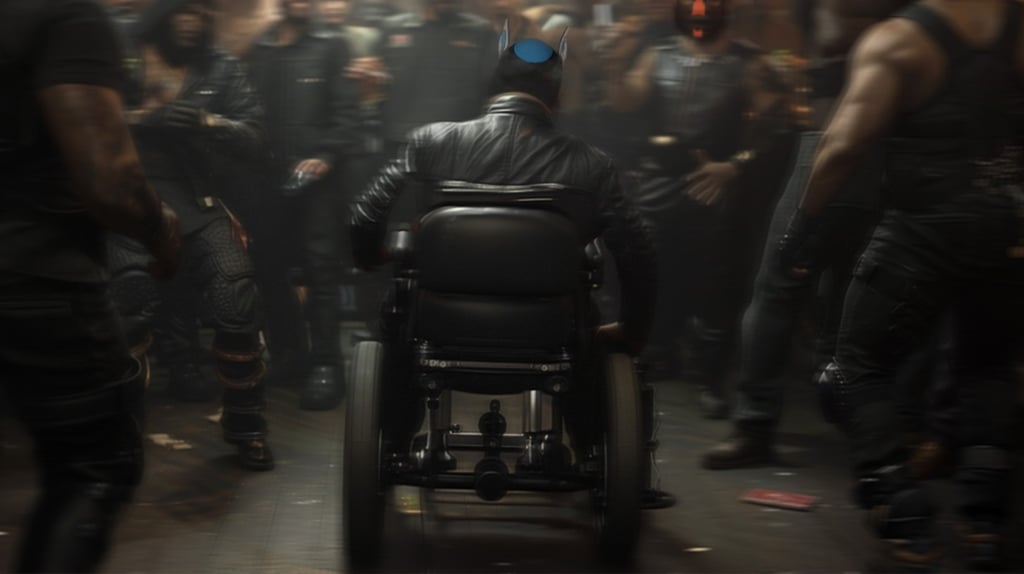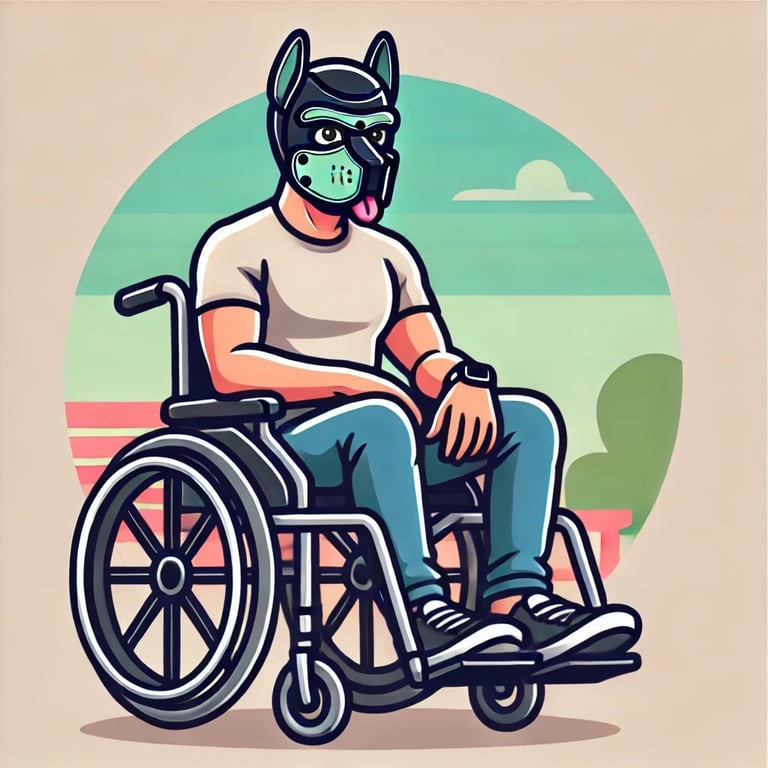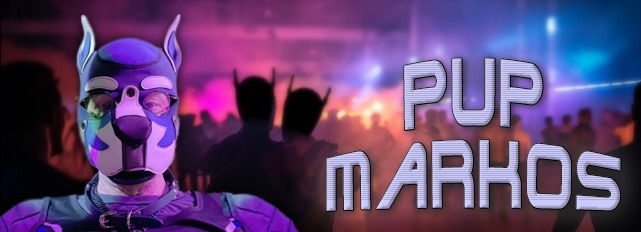Embracing Inclusivity in the Puppy Play Community
Engaging with Those with Physical Disabilities
Pup Markos


Pup Markos’ Experience at Atlanta Eagle
Hey pack! It’s Pup Markos here. Living with a physical disability and using a power scooter since 2017, I often find myself feeling invisible in social settings. At a recent Pup and Gear night at the Atlanta Eagle, this feeling of isolation hit hard. The group I was with moved their conversation to a seating area without wheelchair access, leaving me stranded on the periphery. Surrounded by a crowd of virtual strangers, I felt isolated and forgotten. This experience inspired me to advocate for inclusivity in our community, ensuring that every pup, regardless of physical ability, feels seen, valued, and included.
Creating a More Inclusive Pack
Our community thrives on diversity and acceptance, so let’s make sure we extend that to everyone, including those of us with physical disabilities. Here are some ways we can make our events more inclusive and welcoming.
Understanding and Awareness
First things first, let’s get educated and stay aware:
Educate Yourself: Take some time to learn about different disabilities. This helps you understand what adjustments might be needed during events.
Ask, Don’t Assume: Every pup’s needs are unique. Don’t assume what someone can or can’t do. Just ask them how you can help make things better.
Making Spaces Accessible
Creating an inclusive environment starts with making sure everyone can physically get around.
Choose Accessible Venues: Look for places with ramps, elevators, and wide doorways. Make sure there are accessible restrooms and seating areas too.
Layout Considerations: Arrange spaces to accommodate mobility aids. Ensure there is enough room for maneuvering and that seating options are available at various heights. Avoid cluttered spaces that could become obstacles.
Parking and Transportation: Provide info on accessible parking and public transportation options. If possible, organize transportation that caters to those with mobility needs.
Social Interaction and Participation
It’s not just about the physical space; the social atmosphere needs to be inclusive too.
Communicate Appropriately: When chatting with a pup using a wheelchair or walker, try to get at eye level. It makes conversations more natural and comfortable.
Inclusive Activities: Modify activities to be inclusive. For instance, if your group enjoys physical play, find ways to adapt games or interactions so everyone can participate, such as using signals or voice commands instead of physical movement.
Respect Personal Space: Mobility aids like wheelchairs and walkers are part of a pup’s personal space. Avoid leaning on or touching these aids without permission.


Adapting Group Play Activities
Let’s talk about some fun ways to make group activities more accessible.
Pup Mosh: A pup mosh is where we engage in playful wrestling and roughhousing, mimicking puppies in a pack. To make a pup mosh more accessible for wheelchair-bound pups:
Clear and Safe Space: Ensure the mosh pit area is spacious enough to accommodate wheelchairs. Remove any unnecessary obstacles that could pose a hazard.
Seated Participation: Allow wheelchair-bound pups to engage in the mosh from their chairs. Other participants can playfully interact with them at their level, using hands and voices instead of physical wrestling.
Inclusive Roles: Assign roles that allow for full engagement, such as a “pack leader” who can direct activities and interactions without needing to move around excessively.
Fetch and Tug-of-War: Traditional fetch and tug-of-war games can be adapted to include everyone.
Fetch: Use lightweight, easy-to-grip toys that can be thrown and retrieved from a seated position. Wheelchair-bound pups can throw and catch toys without needing to move excessively.
Tug-of-War: Adapt the game by using shorter, manageable ropes. Ensure wheelchair-bound participants can grip the rope comfortably, allowing them to engage in the game from their seated position.
Obstacle Courses: Create obstacle courses that cater to various mobility levels.
Customizable Paths: Design paths that include both challenging and accessible routes. Include activities that require more mental engagement, such as solving puzzles or completing tasks, alongside physical challenges.
Assistance and Teamwork: Encourage teamwork by pairing participants with varying mobility levels. This fosters camaraderie and ensures everyone can participate in a way that suits their abilities.
Emotional Support and Community Integration
Creating a sense of belonging goes beyond just physical and social accommodations.
Listen Actively: Pay attention to the needs and feedback of members with disabilities. Their experiences can offer invaluable insights into how the community can improve inclusivity.
Role Flexibility: Be open to members participating in roles that suit their comfort and ability levels. Encourage them to take on roles that allow for full engagement, whether it’s in play scenarios or organizational positions within the community.
Buddy System: Implement a buddy system where members pair up to ensure everyone has a partner to assist and support them during events. This can be particularly helpful in navigating crowded spaces and ensuring no one feels isolated.
Encouraging Advocacy and Leadership
Let’s empower pups with disabilities to take on leadership roles and advocate for accessibility within the community.
Leadership Opportunities: Encourage members with disabilities to take on organizational roles. Their firsthand experiences can guide the community towards more inclusive practices.
Feedback Loops: Establish regular check-ins and feedback sessions where all members can voice their experiences and suggestions for improving accessibility and inclusivity.
Conclusion
In our pup and animal play community, inclusivity is more than just a buzzword—it’s a commitment to empathy, respect, and proactive support. By understanding the unique challenges faced by members with physical disabilities and implementing thoughtful, inclusive practices, we can create a pack where everyone, regardless of their physical abilities, feels a genuine sense of belonging. Let’s embrace diversity, enrich our experiences, and strengthen the bonds that make our community truly special. Woof!





